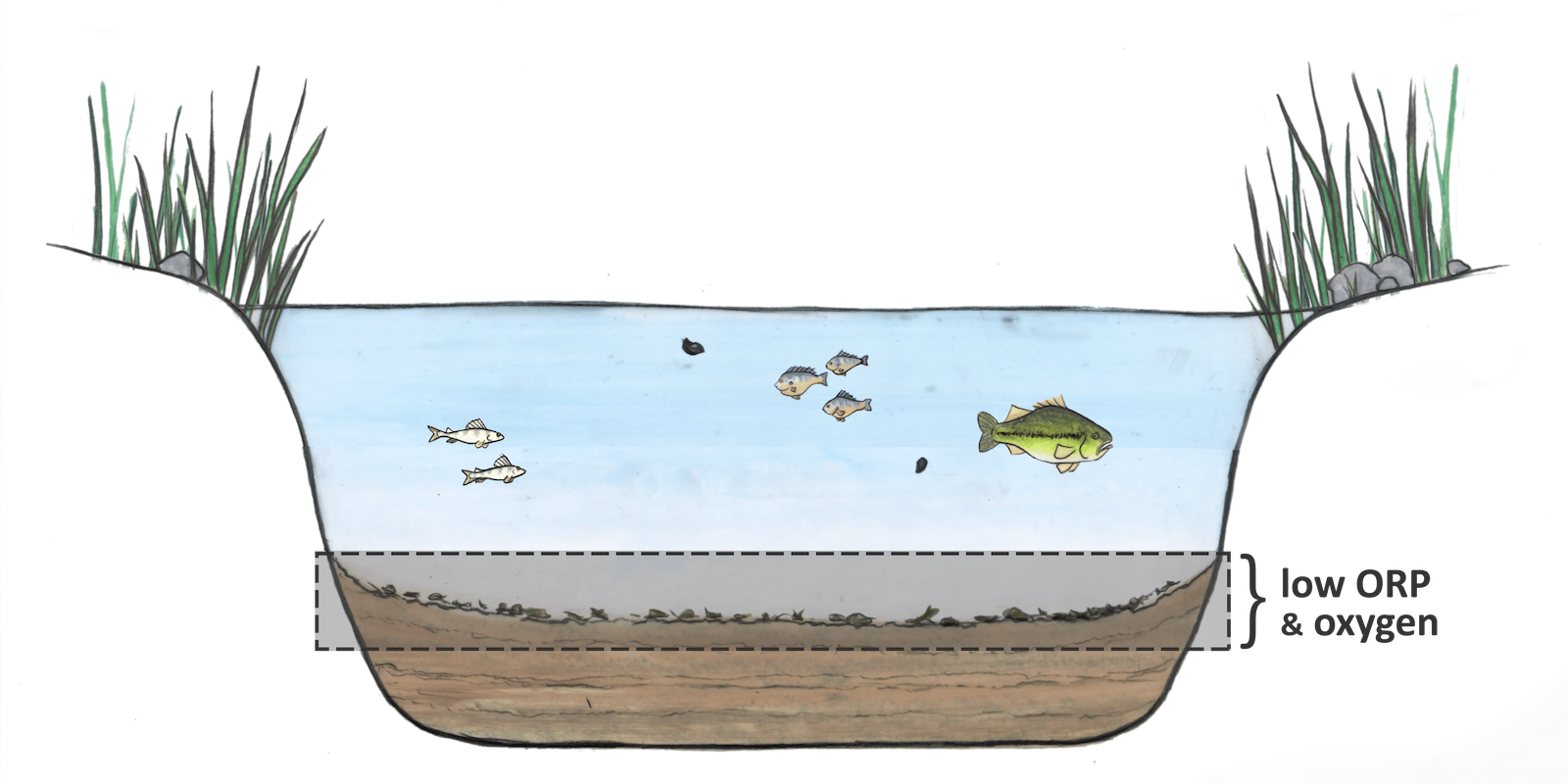In healthy lakes and rivers, ORP should be relatively high between 300-500 mV. In contrast, certain wetlands can contain water with naturally low ORP.
What is it?
Oxidation-reduction potential (ORP) measures the ability of a lake or river to cleanse itself or breakdown waste products. When ORP is high, there is a lot of oxygen present in the water. This means that bacteria that decompose dead tissue and contaminants can work more efficiently.
In general, the higher the ORP value, the healthier the lake or river is. However, even in healthy lakes and rivers, there is less oxygen (and therefore lower ORP values) as you get closer to the bottom sediments.

Oxygen and ORP decrease quickly within the sediment at the bottom of rivers and lakes. This is because there are many bacteria working here to decompose organic matter, and they use up oxygen in the process.
Why does it matter?
ORP depends on the amount of dissolved oxygen in the water, as well as the amount of other elements that function chemically like oxygen (e.g., sulfur, nitrate, iron). When ORP and dissolved oxygen are low there will be lots of dead and decaying material in the water that cannot be cleared or decomposed. Low ORP also influences the form and persistence of certain contaminants, which affects their toxicity to aquatic life. These conditions can negatively impact fish and aquatic bugs.
ORP is often measured in addition to dissolved oxygen because ORP can provide additional information about water quality and degree of pollution, if present.

Certain wetlands can have water with naturally low ORP, especially those containing Sphagnum moss (pictured here).
How is it measured?
ORP is measured directly in the water using an ORP sensor. ORP is measured in millivolts (mV) and can either be above zero or below zero.
ORP is influenced by: dissolved oxygen and other elements that may function chemically like oxygen (e.g., nitrate, sulfur, iron).
ORP influences: the form and toxicity of certain metals.